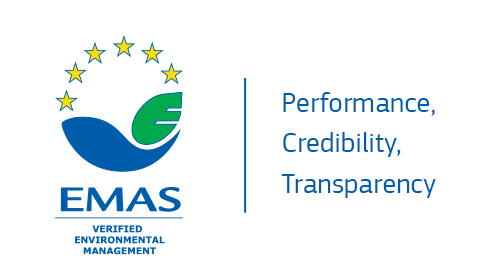
The Green Best Practice Community is a dynamic knowledge platform that allows you to find relevant best practices that can help you make your organisation greener, to share your experience and showcase your achievements and to work with other experts and practitioners at identifying further best practices.
The Green Best Practice Community is hosted and facilitated by the Joint Research Centre (JRC), the European Commission's in-house science and knowledge service, in cooperation with the European Commission's Directorate-General for the Environment.
On this platform you will find:
- Best practices – They are those techniques, measures or actions, both of technical/technological nature and of a more organisational type, that allow organisations in a given sector to minimise their environmental impacts. They address both the direct operations of the organisations as well as impacts across the whole value chain of their products and services over the whole life cycle. Only techniques that are already implemented at full scale by at least few organisations in the given sector and technically feasible and economical viable qualify as best practices.
- Indicators – They are metrics that allow monitoring progress in the implementation of a best practice or more broadly in the improvement of environmental performance in an area. They are identified on the basis of metrics already in use by the organisations in the sector or, anyway, easy to calculate.
- Benchmarks of excellence – They provide an indication of the level of environmental performance achieved by the best performing organisations in the specific area covered by the benchmark. They are not targets or levels of performance that all organisations should reach, but an indication of what is achieved in certain cases that can inspire and help others understand their improvement potential.
- Case studies – These are actual examples of implementation of the principles described in the best practices by real world organisations.
For each best practice, you can find a summary of the main principles in the text on the best practice directly available on the best practice page on the platform. For more detailed information and guidance, you are invited to download the full version of each best practice of your interest that is available as pdf at the bottom of the introductory text. It includes a more detailed description of the techniques, their environmental benefits, economic implications, driving forces and much more.
If you have a question or a comment on a best practice, ask the Community by posting a comment below the relevant best practice. Please also use that function to suggest changes to the best practice (e.g. a further aspect that should be covered) or share your experience on how you have implemented it in your organisation.
Need help to understand what best practice is relevant for your organisation? Wondering where to start to make your organisation greener? Looking for information on how to improve on a specific environmental issue? Ask the Helpdesk and we will guide you directly to the best practices or case studies that can be of help or inspiration in your specific case.
The Green Best Practice Community also allows you to showcase your achievements. Use the "Propose new…" button in the top right of a sector and propose what your organisation is doing as a case study, or a metrics you are using as indicator or your achievement as a benchmark of excellence. You can also suggest that a new area is considered for the identification of a best practice. These proposals will be reviewed by the technical working group of sectoral expert that validates the content of the platform.
Thanks to your active contribution in the platform, a continuously updated best practice knowledge base will be achieved.
This activity is related to the implementation of the EU Eco-Management and Audit Scheme (EMAS) Regulation. This regulation requires that the European Commission develops sectoral reference documents on best environmental management practices (also known as BEMPs) aimed at offering inspiration and guidance to organisations on improving their environmental performance. This activity has two main outcomes: a set of best practices described in detail and published in the form of a best practice report, and the EMAS sectoral reference documents, officially adopted by the European Commission, which contain only the key information e.g. technical description, indicators and benchmarks. The European Commission has been developing the EMAS sectoral reference documents for 11 priority sectors. At present, best practice reports are published or available as final drafts for 9 sectors while 4 sectoral reference documents are adopted and 4 in the adoption process. These documents can be used by both EMAS and non-EMAS registered organisation, and more broadly by organisations who wish to improve their environmental performance and they are seeking for technical guidance for specific issues. The same applies to the content of the Green Best Practice Community. The European Commission will use the up-to-date content of this platform to periodically update the EMAS sectoral reference document.